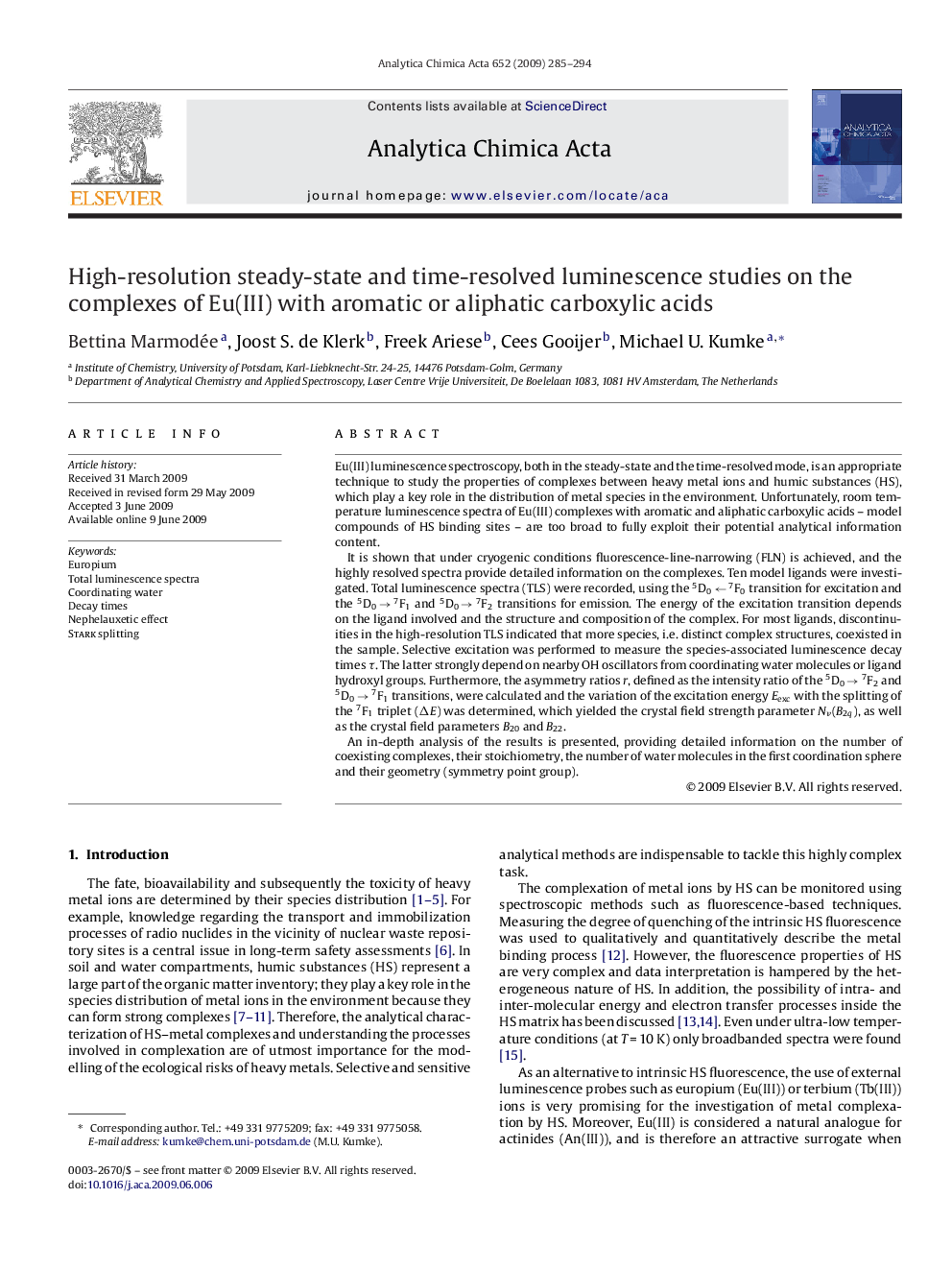| کد مقاله | کد نشریه | سال انتشار | مقاله انگلیسی | نسخه تمام متن |
|---|---|---|---|---|
| 1168295 | 1491155 | 2009 | 10 صفحه PDF | دانلود رایگان |

Eu(III) luminescence spectroscopy, both in the steady-state and the time-resolved mode, is an appropriate technique to study the properties of complexes between heavy metal ions and humic substances (HS), which play a key role in the distribution of metal species in the environment. Unfortunately, room temperature luminescence spectra of Eu(III) complexes with aromatic and aliphatic carboxylic acids – model compounds of HS binding sites – are too broad to fully exploit their potential analytical information content.It is shown that under cryogenic conditions fluorescence-line-narrowing (FLN) is achieved, and the highly resolved spectra provide detailed information on the complexes. Ten model ligands were investigated. Total luminescence spectra (TLS) were recorded, using the 5D0 ← 7F0 transition for excitation and the 5D0 → 7F1 and 5D0 → 7F2 transitions for emission. The energy of the excitation transition depends on the ligand involved and the structure and composition of the complex. For most ligands, discontinuities in the high-resolution TLS indicated that more species, i.e. distinct complex structures, coexisted in the sample. Selective excitation was performed to measure the species-associated luminescence decay times τ. The latter strongly depend on nearby OH oscillators from coordinating water molecules or ligand hydroxyl groups. Furthermore, the asymmetry ratios r, defined as the intensity ratio of the 5D0 → 7F2 and 5D0 → 7F1 transitions, were calculated and the variation of the excitation energy Eexc with the splitting of the 7F1 triplet (ΔE) was determined, which yielded the crystal field strength parameter Nν(B2q), as well as the crystal field parameters B20 and B22.An in-depth analysis of the results is presented, providing detailed information on the number of coexisting complexes, their stoichiometry, the number of water molecules in the first coordination sphere and their geometry (symmetry point group).
Journal: Analytica Chimica Acta - Volume 652, Issues 1–2, 12 October 2009, Pages 285–294